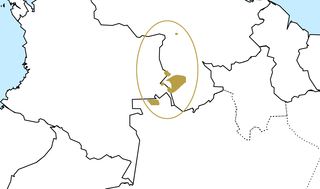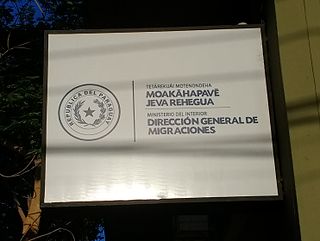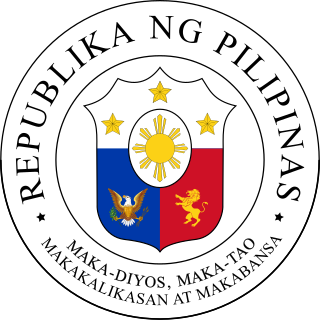Related Research Articles

The Maka or Makaa are a Bantu ethnic group inhabiting the southern rain forest zone of Cameroon. They live primarily in the northern portions of the Upper Nyong division of Cameroon's East Province. Major Maka settlements include Abong-Mbang, Doumé, and Nguélémendouka. Some Maka villages lie over the border into the Centre Province, as well.
Maka or MAKA may refer to:
Iwaidja, in phonemic spelling Iwaja, is an Australian aboriginal language of the Iwaidja people with about 123 native, with an extra 20 to 30 L2 speakers in northernmost Australia. Historically having come from the base of the Cobourg Peninsula, it is now spoken on Croker Island. It is still being learnt by children within the Northern Territory.
Matacoan is a language family of northern Argentina, western Paraguay, and southeastern Bolivia.
The Koti language, or Ekoti, is a Bantu language spoken in Mozambique by about 64,200 people. Koti is spoken on Koti Island and is also the major language of Angoche, the capital of the district with the same name in the province of Nampula.

Mataguayo–Guaicuru, Mataco–Guaicuru or Macro-Waikurúan is a proposed language family consisting of the Mataguayan and Guaicuruan languages. Pedro Viegas Barros claims to have demonstrated it. These languages are spoken in Argentina, Brazil, Paraguay, and Bolivia.

Rukai is a Formosan language spoken by the Rukai people in Taiwan. It is a member of the Austronesian language family. The Rukai language comprises six dialects, which are Budai, Labuan, Maga, Mantauran, Tanan and Tona. The number of speakers of the six Rukai dialects is estimated to be about 10,000. Some of them are monolingual. There are varying degrees of mutual intelligibility among the Rukai dialects. Rukai is notable for its distinct grammatical voice system among the Formosan languages.
Maká is a Matacoan language spoken in Paraguay by the Maká people. Its 1,500 speakers live primarily in Presidente Hayes Department near the Río Negro, as well as in and around Asunción.

The Bole–Tangale languages are a branch of West Chadic languages that are spoken in various states of northeastern Nigeria.

Karai-Karai is a language spoken in West Africa, most prominently North eastern Nigeria. The number of speakers of Karai-Karai is estimated between 1,500,000 to 1,800,000 million, primarily spoken by the ethnic Karai-Karai people. It is an Afro-Asiatic language spoken principally in Nigeria with communities in Bauchi State, Yobe State, Gombe State and other parts of Nigeria. Many Karai-Karai words share a common origin with the Northwest Semitic languages of Hebrew and Arabic. Karai-Karai language is most closely related to the Ngamo and Bole languages which are both considered derivatives of the Karai-Karai language.
Ngamo is an Afro-Asiatic language spoken in Nigeria. The native Ngamo language has two major dialects, viz, Gudi Ngamo and Yaya Ngamo. These dialects are spoken by the various clans both within and outside Gadaka. Ngamo is a member of the West Branch of Chadic and is hence related to Hausa, the dominant language throughout northern Nigeria. Ngamo’s closest linguistic relatives are, however, its neighbors, Karekare, Bole, and Maka.
Enxet, also known as Enxet Sur or SouthernLengua, is a language spoken by the Indigenous southern Enxet people of Presidente Hayes Department, Paraguay. It is one of twenty languages spoken by the wider Gran Chaco Amerindians of South America. Once considered a dialect of the broader Lengua language, Enxet and Enlhet diverged as extensive differences between the two were realized.

Karu, one of several languages called Baniwa (Baniva), or in older sources Itayaine (Iyaine), is an Arawakan language spoken in Guainía, Colombia, Venezuela, and Amazonas, Brazil. It forms a subgroup with the Tariana, Piapoco, Resígaro and Guarequena languages. There are 10,000 speakers.

The Republic of Paraguay is a mostly bilingual country, as the majority of the population uses Spanish and Guaraní. The Constitution of Paraguay of 1992 declares it as a multicultural and bilingual country, establishing Spanish and Guaraní as official languages. Spanish, an Indo-European language of the Romance branch, is understood by about 90% of the population as a first or second language. Guaraní, an indigenous language of the Tupian family, is understood by 77%, and its use is regulated by the Academy of the Guaraní Language.
Makaa (Maka), or South Makaa, is a Bantu language of Cameroon. It is not intelligible with the other language spoken by the Makaa people, North Makaa.

Maka-Diyos, Maka-tao, Makakalikasan at Makabansa is the national motto of the Philippines. Derived from the last four lines of the Pledge of Allegiance to the Philippine Flag, it was adopted on February 12, 1998 with the passage of Republic Act No. 8491, the Flag and Heraldic Code of the Philippines, during the presidency of Fidel V. Ramos. Its adoption came twelve years after the abolition of the country's previous motto, "Isang Bansa, Isang Diwa", which was adopted during the presidency of Ferdinand Marcos in 1979.
Yami language, also known as Tao language, is a Malayo-Polynesian language spoken by the Tao people of Orchid Island, 46 kilometers southeast of Taiwan. It is a member of the Ivatan dialect continuum.

Old Sundanese is the earliest recorded stage of the Sundanese language which is spoken in the western part of Java. The evidence is recorded in inscriptions from around the 12th to 14th centuries and ancient palm-leaf manuscripts from the 15th to 17th centuries AD. Old Sundanese is no longer used today, but has developed into its descendant, modern Sundanese.
Igbo literature is the spoken and written literature of the Igbo people. Before the advents of writing, Igbos practiced oral literature, folk songs and poetry.
References
- 1 2 Maaka at Ethnologue (18th ed., 2015) (subscription required)